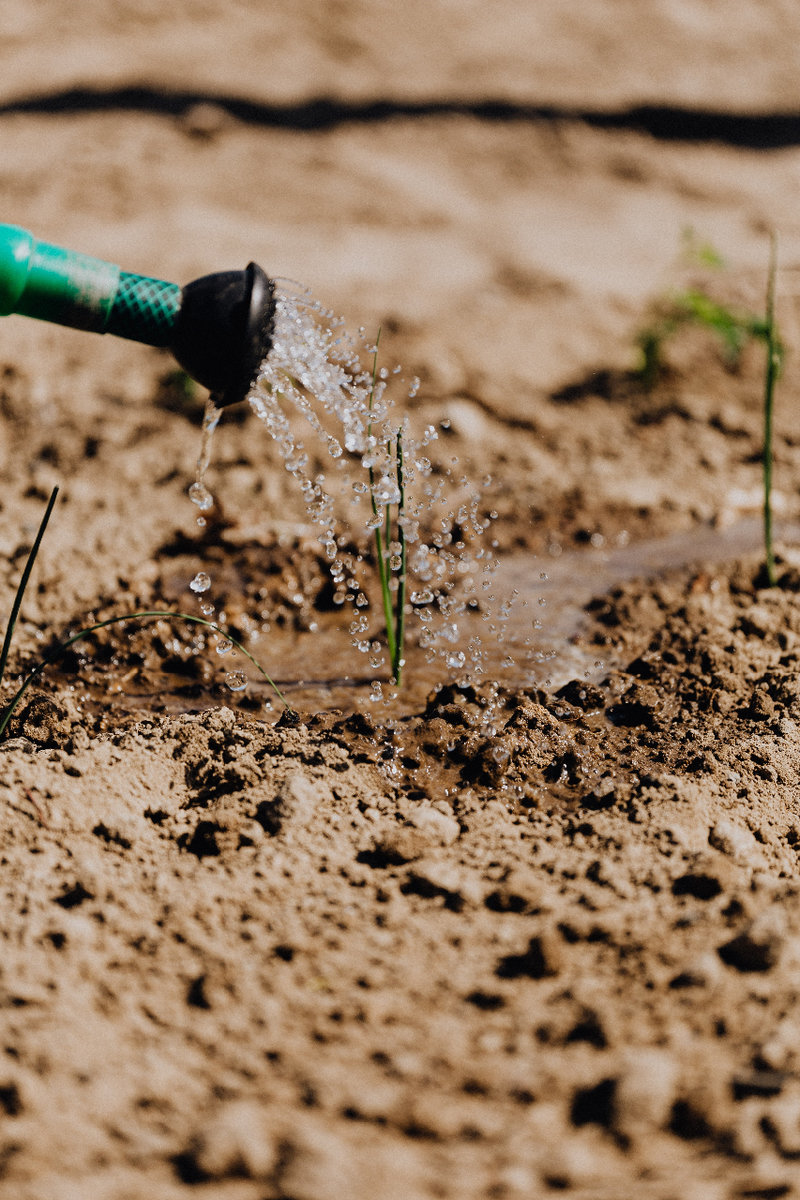
We collect basic website visitor information on this website and store it in cookies. We also utilize Google Analytics to track page view information to assist us in improving our website.
Written by: Summer Graham

An often-overlooked aspect in the restoration of natural areas is one of the most important – the soil. Soil creates the foundation (literally) for plant establishment, so properly restoring soil before planting can make the difference between a successful project and a failed one.
Many people think of soil as “just dirt”, but it is much, much more than that. Healthy soils contain minerals, plant-derived organic matter, nutrients, gases, and an entire web of interacting species like bacteria, fungi, and other micro-organisms. The fungi, or microbes, present in soil are referred to as mycorrhizae (pronounced mai·kuh·rai·zee). These fungi form a symbiotic relationship with a plant’s root system; in exchange for food, they help the plant absorb nutrients from the soil and protect them from certain stressors. These microbes are diverse and abundant. In fact, a single teaspoon of soil can hold thousands of different species and billions of individuals!
Healthy soils contain minerals, plant-derived organic matter, nutrients, gases, and an entire web of interacting species like bacteria, fungi, and other micro-organisms. The fungi, or microbes, present in soil are referred to as mycorrhizae (pronounced mai·kuh·rai·zee). These fungi form a symbiotic relationship with a plant’s root system; in exchange for food, they help the plant absorb nutrients from the soil and protect them from certain stressors. These microbes are diverse and abundant. In fact, a single teaspoon of soil can hold thousands of different species and billions of individuals!
Historically, when agricultural soils became depleted of nutrients from constant farming, farmers turned to additives such as fertilizers. But these solutions are only a temporary fix, and do not address the issue that led to poor soil health in the first place. By harvesting crops from the land year after year, traditional farming breaks the natural process of nutrient cycling since carbon and other nutrients are not returned to the soil by naturally decomposing on the land.
 More recent farming techniques have focused on partially restoring the nutrient cycle by planting cover crops on fields during the off-season, allowing them to remain and decompose before planting crops to harvest. When restoring an area that was previously agricultural field or is currently abandoned and degraded land, amending soil nutrients before planting is essential for healthy plant growth.
More recent farming techniques have focused on partially restoring the nutrient cycle by planting cover crops on fields during the off-season, allowing them to remain and decompose before planting crops to harvest. When restoring an area that was previously agricultural field or is currently abandoned and degraded land, amending soil nutrients before planting is essential for healthy plant growth.
When it comes to protecting and restoring soils, there are some useful guidelines available. While many of these focus on the importance of soil from an agricultural standpoint, organizations like Credit Valley Conservation and Toronto and Region Conservation Authority have useful guides for soil management during development and restoration activities. These resources have helpful information on salvaging and replacing topsoil, testing soils, dealing with issues such as compaction, and creating soil management plans. They also provide general guidelines for integrating compost and other organic material into a site.
Keep in mind that each site will be different and methods for successful soil restoration may vary depending on your target or goal, and recommendations may also differ depending on where you live in Canada. Here are a few recommendations that are good place to start!
Additional Reading:
Soil Science Society of America - Why is Soil Important?
The Plant Microbiome and Native Plant Restoration: The Example of Native Mycorrhizal Fungi
To restore our soils, feed the microbes
Using Beneficial Soil Microbes to Improve Plant Growth
How Do You Restore Degraded Soil? - The Permaculture Research Institute
Additional Learning:
Join our email list to receive occasional updates about Network of Nature and ensure you get the news that matters most, right in your inbox.